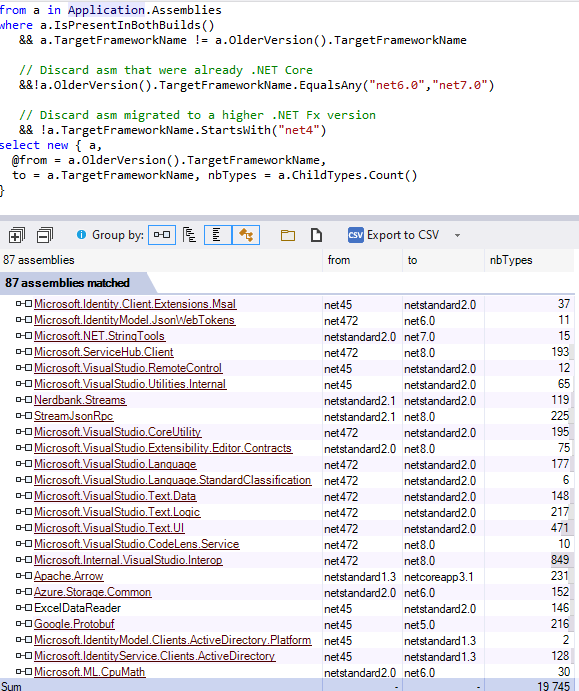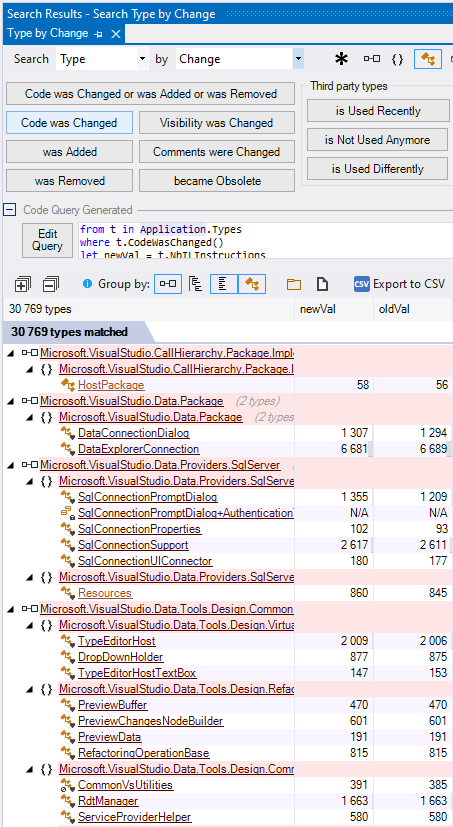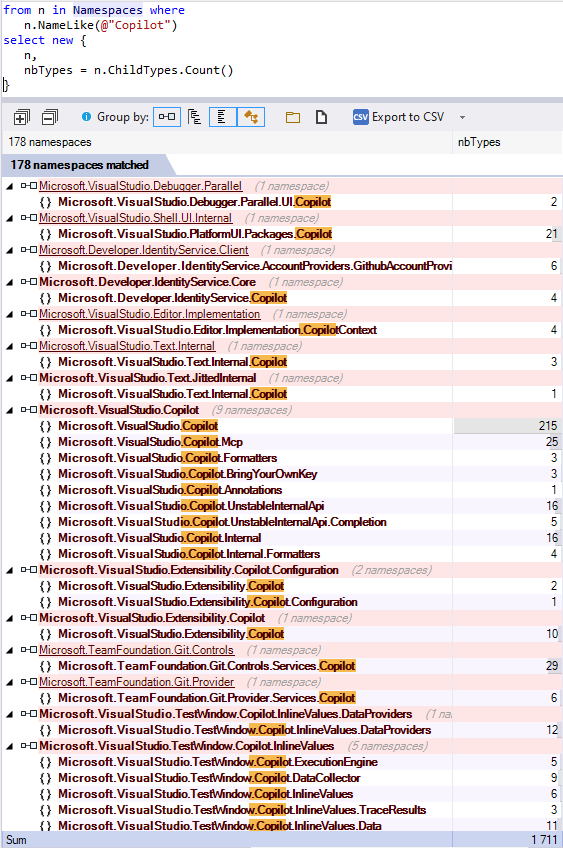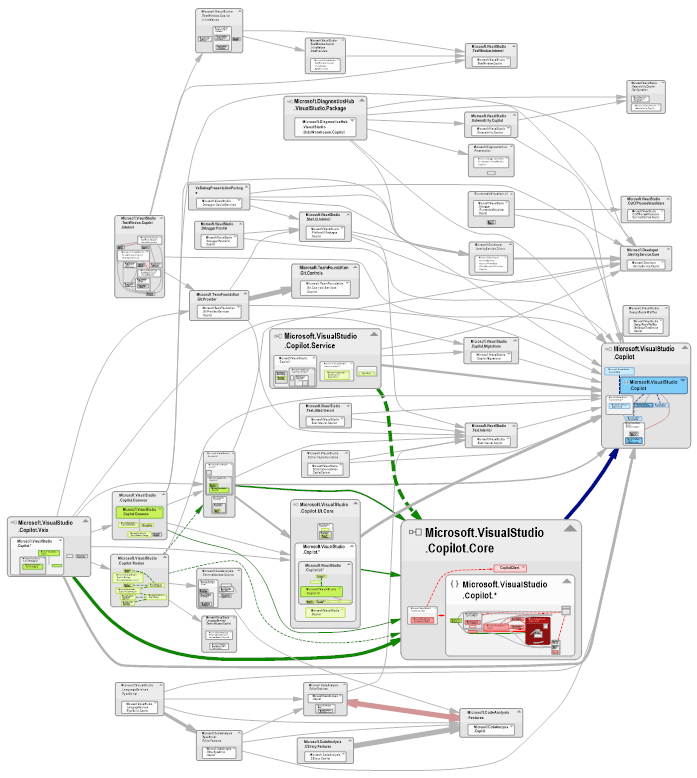After four years of waiting since Visual Studio 2022, the Visual Studio 2026 Preview Insider is finally here! You can download it today here. In our recent post, “Visual Studio Next Version: What’s Coming and What to Expect”, we detailed the upcoming features and improvements you can look forward to.
While this release includes hundreds of bug fixes and enhancements, the primary focus is clear: performance and deeper AI integration.
Performance, Performance, Performance
We tested Visual Studio 2026 Preview this morning on the NDepend codebase, and the speed improvements are immediately noticeable. For instance, our solution now opens in just 9 seconds until the Solution Explorer is fully usable, compared to 14 seconds in Visual Studio 2022.
In an insightful video with Steve Smith (Ardalis), Mads Kristensen, Visual Studio Product Manager, explains how the team has optimized performance by decreasing the amount of operations executed on the UI thread. These changes significantly improve overall responsiveness and reduce the risk of the UI freezing during heavy operations.
While we’ve already explored the new features—including Copilot and Profiler, updated modern themes, and a completely redesigned Settings page—I’d like to take a moment to share some insights from scanning the Visual Studio 2026 Insider Preview assemblies with NDepend.
Code Migrated from .NET Framework to .NET Core
Using the C# LINQ code query below, we discovered that a significant portion of Visual Studio’s code has been migrated from .NET Framework to .NET Core or .NET Standard 2.0. Specifically, 87 assemblies out of 2,153 analyzed fall into this category, representing 19,745 types out of a total of 362,965.
Choosing .NET Standard 2.0 makes sense, as it allows code to run in both .NET Core and .NET Framework contexts. We followed a similar path in our own migration and shared our experience in this article: 5 Lessons Learned from Migrating a Large Legacy Application to .NET Core. That said, being locked into .NET Standard 2.0 also comes with limitations. For example, this prevents taking advantage of modern features like Span<T> and other API, language features and runtime innovations that significantly boost performance.
Still, seeing all this code already migrated is an encouraging step forward, giving us hope for a future version of Visual Studio fully powered by .NET Core.
|
1 2 3 4 5 6 7 8 9 10 11 12 13 |
from a in Application.Assemblies where a.IsPresentInBothBuilds() && a.TargetFrameworkName != a.OlderVersion().TargetFrameworkName // Discard asm that were already .NET Core &&!a.OlderVersion().TargetFrameworkName.EqualsAny("net6.0","net7.0") // Discard asm migrated to a higher .NET Fx version && !a.TargetFrameworkName.StartsWith("net4") select new { a, @from = a.OlderVersion().TargetFrameworkName, to = a.TargetFrameworkName, nbTypes = a.ChildTypes.Count() } |
Using this code query, we found 156,782 types in .NET Core assemblies compared to 207,183 in .NET Framework assemblies, showing that there’s still significant work ahead in the migration.
|
1 2 3 |
from a in Application.Assemblies where !a.TargetFrameworkName.StartsWithAny("net4", "net1", "net2") select new { a, nbTypes = a.ChildTypes.Count(), a.TargetFrameworkName } |
New Code and Refactored Code
Mads explained that over the past two years, the team has worked intensively—fixing 4,489 issues and implementing 290 feature requests that will ship with this next version. And indeed, we matched 30.769 types touched or refactored (out of a total of 362,965) and 29.817 new types.
Another noteworthy detail Mads shared in his interview with Steve is that, on average, around 150 Microsoft engineers are working full-time on Visual Studio. Naturally, there’s some rotation—when a new Azure DevOps feature needs integration, for example, certain ADO engineers may join the Visual Studio team for a few months before returning to their primary work.
Copilot Code
Finally, we ran a query to check how many namespaces include “Copilot” in their full names—and the results were impressive. We found 178 matching namespaces (most newly introduced with Visual Studio 2026), containing a total of 1,711 types. And this only covers the client-side of Copilot, as the bulk of the AI functionality resides on the server side.
In a recent Reddit thread about Visual Studio 2026 Insider, some developers voiced concerns about the heavy emphasis on AI. One explanation I’d suggest is that tools like Copilot tend to shine on smaller-scale projects—the kind often built with VS Code—whereas large-scale enterprise solutions, typically developed with Visual Studio, present different challenges.
Below is a dependency graph of the Copilot-related namespaces. You can also view the full vectorized version of this graph, generated using the new export feature.
Conclusion
After a long period of interrogation about the next major version of Visual Studio, it is finally publicly released and we can use it for real. This is a preview version and we haven’t seen any timeframe for betas version and general availability. Could it reach November 2025 to be released with .NET 10 and C# 14?
Let’s end with this answer from Microsoft Senior Program Manager, Maddy Mondaquila to this question: Is Visual Studio Going Away?





